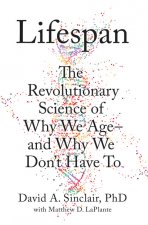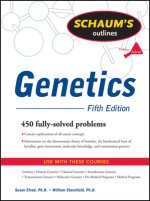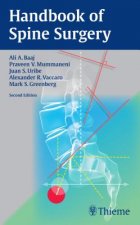
Kód: 04687275
Intracellular Protein Degradation
Autor A. J. Rivett
This volume brings together a set of reviews that provide a summary of our current knowledge of the proteolytic machinery and of the pathways of protein breakdown of prokaryotic and eukaryotic cells. Intracellular protein degradat ... celý popis
- Jazyk:
 Angličtina
Angličtina - Vazba: Pevná
- Počet stran: 312
Nakladatelství: Elsevier Science, 1998
- Více informací o knize

Mohlo by se vám také líbit
-

Lima's Red Hot Chilli in Arabic and English
343 Kč -

Discourse of Text Messaging
1473 Kč -

Poetical Works: Volume 2. Paradise Regain'd; Samson Agonistes; Poems upon Several Occasions, both English and Latin
9258 Kč -

Oxford Studies in Ancient Philosophy: Volume XIV, 1996
6582 Kč -

Peacock Committee and UK Broadcasting Policy
1665 Kč -

Sound of History
779 Kč -

Killed Strangely
906 Kč
Darujte tuto knihu ještě dnes
- Objednejte knihu a zvolte Zaslat jako dárek.
- Obratem obdržíte darovací poukaz na knihu, který můžete ihned předat obdarovanému.
- Knihu zašleme na adresu obdarovaného, o nic se nestaráte.
Více informací o knize Intracellular Protein Degradation
Nákupem získáte 567 bodů
 Anotace knihy
Anotace knihy
This volume brings together a set of reviews that provide a summary of our current knowledge of the proteolytic machinery and of the pathways of protein breakdown of prokaryotic and eukaryotic cells. Intracellular protein degradation is much more than just a mechanism for the removal of incorrectly folded or damaged proteins. Since many short-lived proteins have important regulatory functions, proteolysis makes a significant contribution to many cellular processes including cell cycle regulation and transcriptional control. In addition, limited proteolytic cleavage can provide a rapid and efficient mechanism of enzyme activation or inactivation in eukaryotic cells. In the first chapter, Maurizi provides an introduction to intracellular protein degradation, describes the structure and functions of bacterial ATP-dependent proteases, and explores the relationship between chaperone functions and protein degradation. Many of the principles also apply to eukaryotic cells, although the proteases involved are often not the same. Interestingly, homologues of one of the bacterial proteases, Ion protease, have been found in mitochondria in yeast and mammals, and homologues of proteasomes, which are found in all eukaryotic cells have been discovered in some eubacteria. Studies of proteolysis in yeast have contributed greatly to the elucidation of both lysosomal (vacuolar) and nonlysosomal proteolytic pathways in eukaryotic cells. Thumm and Wolf (chapter 2) describe studies that have elucidated the functions of proteasomes in nonlysosomal proteolysis and the contributions of lysosomal proteases to intracellular protein breakdown. Proteins can be selected for degradation by a variety of different mechanisms. The ubiquitin system is one complex and highly regulated mechanism by which eukaryotic proteins are targetted for degradation by proteosomes. In chapter 3, Wilkinson reviews the components and functions of the ubiquitin system and considers some of the known substrates for this pathway which include cell cycle and transcriptional regulators. The structure and functions of proteosomes and their regulatory components are described in the two subsequent chapters by Tanaka and Tanahashi and by Dubiel and Rechsteiner. Proteasomes were the first known example of threonine proteases. They are multisubunit complexes that, in addition to being responsible for the turnover of most short-lived nuclear and cytoplasmic protein, are also involved in antigen processing for presentation by the MHC class I pathway. Recent studies reviewed by McCracken and colleagues (chapter 6) lead to the exciting conclusion that some ER-associated proteins are degraded by cytosolic proteasomes. Lysosomes are responsible for the degradation of long-lived proteins and for the enhanced protein degradation observed under starvation conditions. In chapter 7 Knecht and colleagues review the lysosomal proteases and describe studies of the roles of lysosomes and the mechanisms for protein uptake into lysosomes. Methods of measuring the relative contribution of different proteolytic systems (e.g., ubiquitin-proteasome pathway, calcium-dependent proteases, lysosomes) to muscle protein degradation, and the conclusions from such studies, are reviewed by Attai and Taillinder in the following chapter. Finally, proteases play an important role in signaling apoptosis by catalyzing the limited cleavage of enzymes. Mason and Beyette review the role of the major players, caspases, which are both activated by and catalyze limited proteolysis, and also consider the involvement of other protoelytic enzymes in this pathway leading cell death.
 Parametry knihy
Parametry knihy
Zařazení knihy Knihy v angličtině Mathematics & science Biology, life sciences Life sciences: general issues
5666 Kč
- Plný název: Intracellular Protein Degradation
- Autor: A. J. Rivett
- Jazyk:
 Angličtina
Angličtina - Vazba: Pevná
- Počet stran: 312
- EAN: 9780762303878
- ISBN: 0762303875
- ID: 04687275
- Nakladatelství: Elsevier Science
- Hmotnost: 650 g
- Rozměry: 234 × 156 × 19 mm
- Datum vydání: 07. August 1998
Oblíbené z jiného soudku
-

The Molecule of More
436 Kč -

Evolution
720 Kč -

Power, Sex, Suicide
329 Kč -

Psychopath Inside
404 Kč -

Science of Meditation
323 Kč -

Oxygen
302 Kč -

Race Differences in Intelligence
873 Kč -

Equine Genomics
5707 Kč -

The Selfish Gene
302 Kč -

Undoing Project
335 Kč -

Biology of Belief
441 Kč -

Power of Habit
239 Kč -

Sapiens
378 Kč -

Lifespan
596 Kč -

The Extended Phenotype
329 Kč -

Into the Magic Shop
381 Kč -

Homo Deus
323 Kč -

Cosmic Serpent
256 Kč -

Greatest Show on Earth
323 Kč -

Speculations on the Evolution of Human Intelligence
242 Kč -

Blind Watchmaker
378 Kč -

We Are Our Brains
323 Kč -

River Out of Eden
276 Kč -

Brain Book
543 Kč -

Human Brain Coloring Book
467 Kč -

Crack In Creation
365 Kč -

Schaum's Outline of Genetics, Fifth Edition
692 Kč -

Brain Rules (Updated and Expanded)
341 Kč -

Hidden History of the Human Race
346 Kč -

Fixing My Gaze
561 Kč -

Neanderthal Man
433 Kč -

Why We Run
406 Kč -

On Natural Selection
185 Kč -

Handbook of Spine Surgery
2449 Kč -

Cartoon Guide to Genetics
410 Kč -

Ecological Thought
778 Kč -

Creative Evolution
451 Kč -

Brief History of Everyone Who Ever Lived
213 Kč -

Consciousness
498 Kč -

Social Conquest of Earth
456 Kč -

Atlas of Human Brain Connections
4504 Kč -

Double Helix
452 Kč -

Masters of the Planet
392 Kč -

Vital Dust
822 Kč -

What Mad Pursuit
683 Kč -

Zooarchaeology and Modern Human Origins
2998 Kč -

Handbook of Schizophrenia Spectrum Disorders, Volume I
5060 Kč -

Tree of Life
1225 Kč -

Neuroendocrinology of Behavior and Emotions
5083 Kč
Osobní odběr Praha, Brno a 12903 dalších
Copyright ©2008-24 nejlevnejsi-knihy.cz Všechna práva vyhrazenaSoukromíCookies



 Vrácení do měsíce
Vrácení do měsíce 571 999 099 (8-15.30h)
571 999 099 (8-15.30h)